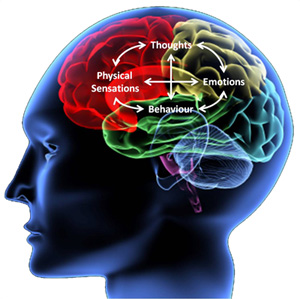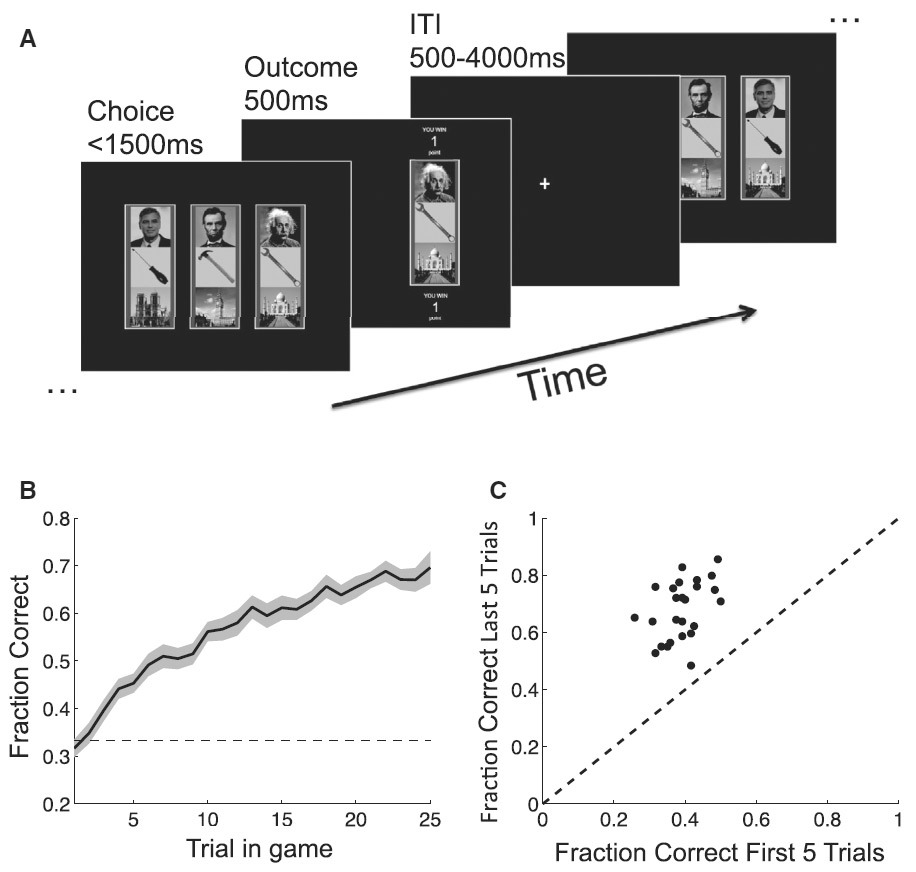How the brain decides what is important and what is not
 A person cannot control which objects in the surrounding world will attract his attention. This process occurs unconsciously. Nevertheless, it is very important in decision making, as well as in many practical tasks when it comes to the impact on the mass audience. Scientists from Princeton and Stanford universities continued the work of their predecessors in studying the mechanism of attention in humans. They studied how, under the influence of reward, certain neural circuits in the brain are strengthened, which determine which stimulus a person will react to, paying attention to him and ignoring the rest.
A person cannot control which objects in the surrounding world will attract his attention. This process occurs unconsciously. Nevertheless, it is very important in decision making, as well as in many practical tasks when it comes to the impact on the mass audience. Scientists from Princeton and Stanford universities continued the work of their predecessors in studying the mechanism of attention in humans. They studied how, under the influence of reward, certain neural circuits in the brain are strengthened, which determine which stimulus a person will react to, paying attention to him and ignoring the rest.The theory was confirmed that the attention of a person is effectively programmed with the help of reward. The study of American scientists is of great importance for the development of behavioral therapies - psychotherapy, which corrects a person’s abnormal behavior by reinforcing desired spontaneous behavior.
Science still knows little about how the attention of a person and new knowledge gained in the decision-making process are interrelated. In studies on this topic, experts use a special method of learning with reinforcement (reinforcement learning). People use exactly the same method of strengthening education as in the training of artificial intelligence, only here neurologists set the task not to teach the AI, but to study the brain in an attempt to understand how its reaction changes when it possesses more information than before.
Despite the ubiquitous success of algorithms for learning with reinforcement in explaining brain activity on simple tasks, this technique has shown extreme inefficiency on more complex tasks in a complex (multidimensional) environment. That is, in situations that surround us in the real world.
One of the solutions to the problem is to implement the selective attention of the test subjects to reduce the multidimensionality of the environment. However, there is a certain difficulty. To effectively study the learning process, it is necessary to narrow the multidimensionality of the environment to those dimensions that stimulate the learning process, that is, to the important dimensions. At the same time, it is not always clear what exactly these areas should be. The person himself gradually determines which signs are important to take into account for the correct solution of the problem; this comes with experience, that is, directly in the learning process.
')
A group of American researchers from Princeton and Stanford universities tried to solve this problem. They hypothesized that in this case (in a complex multidimensional environment) there is a two-way exchange of information between a person’s attention and learning ability. The results of their research, scientists published in the article " Dynamic interaction between learning with reinforcement and attention in multidimensional environments " in the journal Neuron .
To test their hypothesis, scientists suggested that the experiment participants perform the task of training with reinforcement with a mixed stimulus. In each test, the participant was shown three images: a person's face, a geographical landscape and a tool. At the same time, the brain of the participants in the experiment was constantly scanned using a tool for functional magnetic resonance imaging (fMRI). In each of the tests, only one of the three stimuli was related to the receipt of remuneration, which corresponds to the behavior of a person in the real world, when only certain specific information is important for making a decision. You need to determine what this information is.
Using an eye movement scanner and a multilateral analysis of fMRI patterns, scientists were able to make a quantitative assessment of the attention that people give to each of the three stimuli in each test. After “fixing” the priority of a certain stimulus in the brain of experimental subjects, the scientists conducted a repeated series of tests to determine how much the acquired experience influences the further behavior of the experiment participants, including the reaction after the prediction errors. In the end, the researchers tried to identify areas of the brain that are directly activated at the moment when a person makes a choice on which object to focus on. That is what exactly neural circuits control the attention of a person.

Schematic illustration of the experiment. In each of the tasks, the participant was shown three images, he selected one of them, received an answer, and proceeded to the next image. Graph B shows that with each new test, the number of choices for the most advantageous stimulus increased. Graph C shows that choosing the right stimulus in the last five tests from the set significantly exceeds the number of correct answers in the first five tests.
The results of the experiments showed that the learning process with reinforcements actually works in the human brain, while the brain selects certain stimuli from the multidimensional space that influence the result and pays less attention to the rest.
For practical purposes, this feature of the brain can be used in different ways. So, in the field of information security (or when meeting with the opposite sex), in order to attract the attention of the victim, a certain incentive should be forced to which the victim pays special attention. In this case, you can get the desired result, because the victim will not be so susceptible to other stimuli.
In social engineering, this feature is used in various ways. For example, the victim will be especially grateful if someone with knowledge and experience comes to help in solving the problem. However, she will not pay any attention to all other incentives (identity card, position and rank of a person), which would necessarily pay attention in the absence of the main stimulus, which is the problem. Accordingly, the characteristic technique is to create a problem, and then come to the aid of the person with whom you want to make contact.
Popular methods in social engineering are also activation in a person of strong emotions (fear, sympathy, guilt), which immediately drown out other stimuli in the process of activating neural networks responsible for attention in the brain.
The scientific work was published on January 18, 2017 in the journal Neuron (doi: 10.1016 / j.neuron.2016.12.0.040).
Source: https://habr.com/ru/post/370087/
All Articles